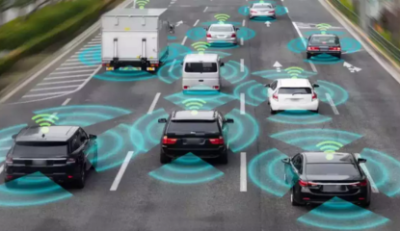 In a period of technological revolution, the automotive technology industry has been able to achieve safety as the most significant priority through the integration of innovative features into vehicles. These innovations, ranging from collision avoidance systems to advanced driver assistance technologies, strive to reduce the risks associated with driving and the chances of accidents. Let us explore the emergence of revolutionary safety features that are changing how the automotive industry works.
In a period of technological revolution, the automotive technology industry has been able to achieve safety as the most significant priority through the integration of innovative features into vehicles. These innovations, ranging from collision avoidance systems to advanced driver assistance technologies, strive to reduce the risks associated with driving and the chances of accidents. Let us explore the emergence of revolutionary safety features that are changing how the automotive industry works.
Safety Features in Automotive Vehicles
Collision Avoidance Systems
- Collision avoidance systems employ several sensors, cameras, and radar to recognize potential collisions and take the required measures to avoid or reduce their intensity.
- Examples might include automatic emergency braking (AEB), blind-spot detection, lane departure warnings, and forward collision warnings.
- These systems extend more layers of protection to drivers, thus increasing the safety of our roads.
Blind Spot Detection
- Sensors or a combination of sensors and cameras placed on side mirrors and the rear bumper provide 360-degree electronic monitoring of the vehicle’s surroundings.
- One way of preventing such accidents is to use this technology to inform drivers of vehicles in their blind spots or obstacles that might cause accidents when sudden lane changes occur.
- The real-time supervision of blind spots greatly lowers the possibility of crashes, especially in freeway driving and lane changes.
Automatic Emergency Braking (AEB)
- AEB systems employ sensors that detect frontal crashes and automatically apply the brake to avoid or reduce the damage.
- Along with the ESC, AEB will be a standard part of all new vehicles.
- AEB reacts promptly to any danger, minimizing accidents’ severity and consequences. Drivers are safer on high-speed or congested roads.
Lane Departure Warning
- The system, installed with a camera near the vehicle’s rearview mirror, follows its position within its lane.
- When the vehicle unintentionally deviates from its lane without signaling, the system will warn the driver via auditory, visual, or tactile stimuli in Automotive Technology.
- The lane departure warning systems can be invaluable in maintaining alertness, thus reducing the risk of unintentional lane departures, especially for long journeys or when drivers are tired.
Electronic Stability Control (ESC)
- ESC, assisted by ABS, maintains vehicle steering control during emergency braking.
- Using ABS, which applies braking pressures to individual wheels, and torque control, which modulates engine torque, ESC prevents skidding and loss of traction on slippery or uneven surfaces.
- This is a crucial technology for reducing the risk of rolling over and spinning out, stabilizing the vehicle, and improving the safety of the occupants.
Forward Collision Warning
- Forward collision warning systems use sensors to detect automotive vehicles that are going slower or stopped and then send a warning to the driver.
- Once the system senses a probable collision, it sends a warning to the driver, who can then take appropriate avoidance or mitigation actions.
- Forward collision warning systems are the driver’s best friends when it comes to providing early warnings. They enable proactive driving and minimize the risk of rear-end collisions, which are quite a common type of accident on the roads.
While the automotive industry is already placing safety as a top priority, these innovations only serve as a snapshot of the game-changing technologies that are reimagining the way we drive. These features are not only about alerting the driver to danger but also intervening in critical situations, thereby minimizing risks and saving lives.
The Evolution of Automotive Technology Safety
From the beginning, seat belts and airbags were the only safety measures, but now we have highly advanced collision avoidance systems to prevent crashes.
The new generation of sensors, artificial intelligence, and vehicle communication enhanced the safety system, making it more intelligent and responsive.
Continuous research and development will lead to the emergence of new technologies that will make road travel safer and help passengers be safer.
Challenges and Considerations in the Automotive Technology
In addition to their efficiency, safety technologies have challenges, e.g., false alarms, sensor limitations, and driver misuse. Proper driver education and training should be given to drivers to help them understand the qualities and constraints of these technologies. On the other hand, standardization and regulation are also among the key factors responsible for the uniformity and consistency of the safety features in various models of vehicles and different manufacturers.
Conclusion
The future of automotive safety is very clear. Technology will remain the main force in reducing accidents and saving lives on the road. From automatic braking systems to autonomous driving abilities, the opportunities are abundant. Through innovation and partnerships, the industry will deliver the safest and most eco-friendly vehicles, which will be used for many decades.
The automotive technology is making an incredible impact on the driving experience by focusing on continuous improvement and integrating new safety features. As a result, the number of accidents and the death toll on the roads are going down drastically.
